| Home | Diary | Flora | Fauna | Rugs | Dogs/Cats | Events |
| Smallholding 2016-24 | OFIYC 2013-15 | Farm Products/ Services | About |
| 2024 | 2025 |
| << September 2025 | October 2025 | November 2025 >> |
|
|||||||||||||||||||||||||||||
|
1st: Ladybirds (plus spot the odd one out) We had a bit of an influx of ladybirds yesterday. Around 50 or 60 landed on our windows and doors to enjoy the warm sunshine on the south facing side of our house. And every single one was a Harlequin!! We didn't realise how varied their colouring and patterns could be - the key identifier, is the white patterning on the heads The harlequin ladybird first arrived in the UK from Asia in 2004, and is now one of the most common ladybirds in the country. It is larger than most of our native species and is a voracious predator - as well as eating aphids, it also eats other ladybirds' eggs and larvae. It also has multiple broods so can make quite a dent in our native species populations. As with a lot of invasive species, humans played a role by introducing it into America and then Europe, to deal with aphid problems. It was only a matter of time before it hit UK shores. We see very few native ladybirds on our land and to date, only two species, the 7 and the 14 spots. Recent research suggests that the impact of the Harlequin on our native ladybirds may not be as bad as feared, BUT the picture isn't yet totally clear. Thanks to Jo Everitt for finding these articles: RHS and NHM And our odd one out: the caterpillar of the rather fabulous Poplar Hawk Month - one of our favourites. 
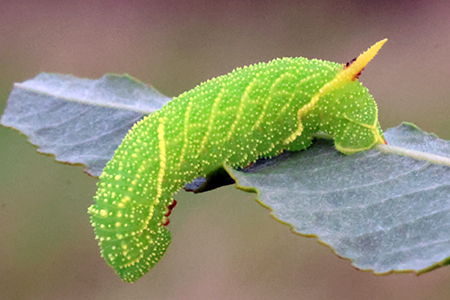
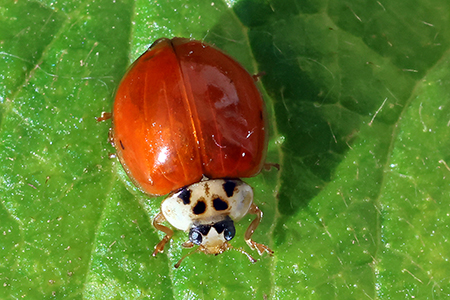

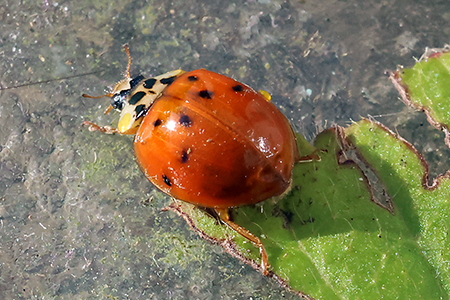
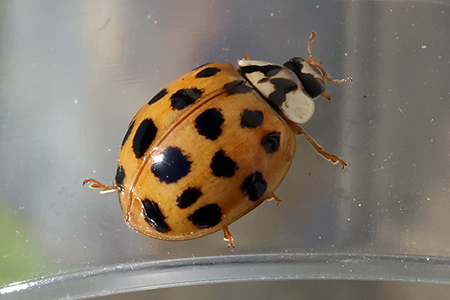
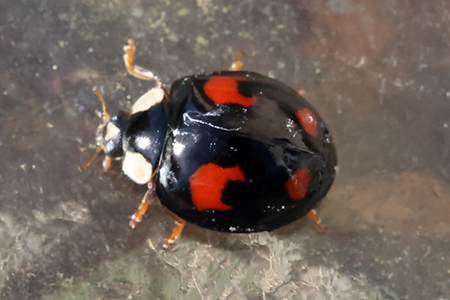
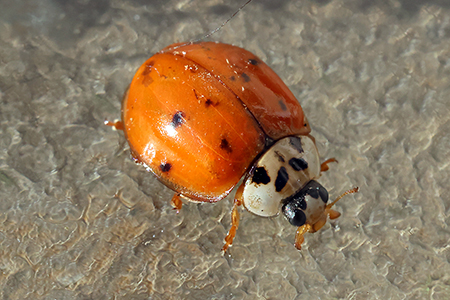 |
|||||||||||||||||||||||||||||
|
2nd: Meadow Pipits The land is full of meadow pipits just now - we see up to 50/ 60 at once sometimes. They congregate on the wires, flock in the grass grass, fly up to the saplings and the hedgerows. It's obviously been a good year for them and autumn/ winter is the time of year when they do get together in large flocks. Photo of individual bird taken in February!!  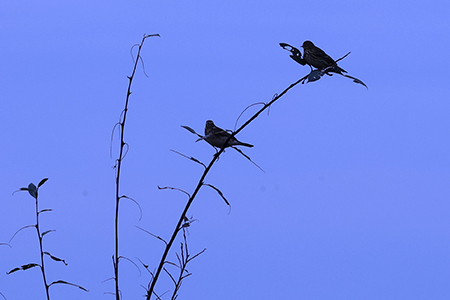  |
|||||||||||||||||||||||||||||
|
3rd: Long-tailed tits Look what appeared on our feeders this morning for the first time. We have seen them on the land before, but they hadn't come to feed till now. Let's hope they become regulars. |
|||||||||||||||||||||||||||||
|
4th: Corvids It's a joy watching the corvids fly around our land. In the winds they seem to know exactly which way to face and often they can be seen taking off backwards from the wires and trees and allowing themselves just to be carried free!! What a fabulous feeling that must be. (Not sure on the ID of these - rook or raven or even crow - will consult with some experts.)  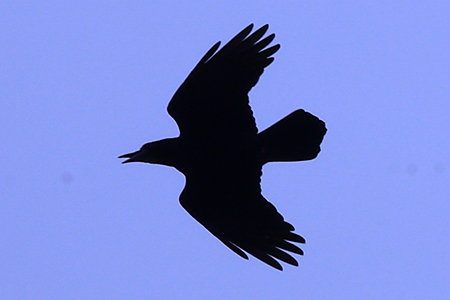 |
|||||||||||||||||||||||||||||
|
5th: Native or not? All these plants (from one bank in Fruit Field) have come from seed sown this year, seed that was sold as good for bees, butterflies and other invertebrates; great for birds; from wild seed native to the UK - in other words a right royal mixture!!! So, of these eight, four are considered native plants (Corn Chamomile, Cornflower, Knapweed and Vipers Bugloss), one non-native (Plains Coreopsis) and the remaining three (Corn Marigold, Yarrow and Dill) are now considered as 'naturalised' as they were introduced several or many thousands of years ago. Do there statuses matter to the wildlife? Some, especially the non-native Plains Coreopsis, do look as though they belong in a garden, rather than a wilded area but our current thinking is that as long as none become too invasive to the determent of others, the wildlife really won't mind. Corn Chamomile and Cornflower 
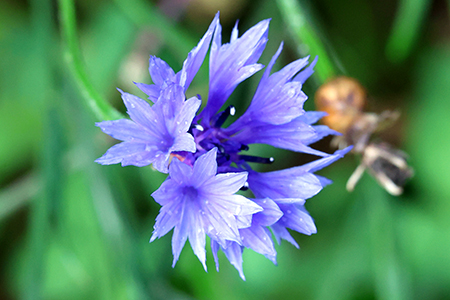 Corn marigold and Dill 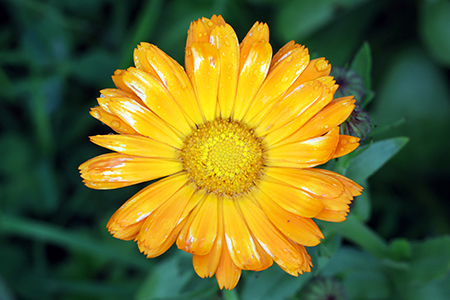
 Knapweed and Plains Coreopsis 
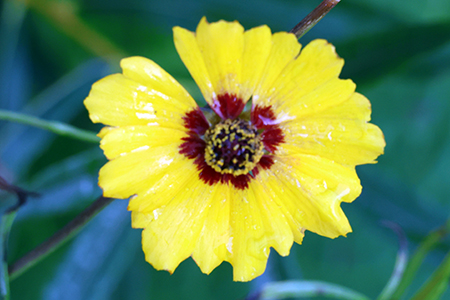 Vipers Bugloss and Yarrow 
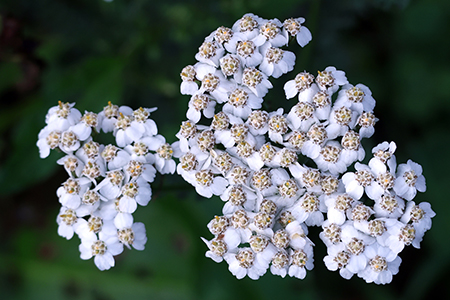 |
|||||||||||||||||||||||||||||
|
6th: Our Grey wagtail is still around |
|||||||||||||||||||||||||||||
|
7th: Nuthatches Our nuthatches definitely love the fat pellets we put out. Beautiful birds, so colourful.. and unlike the treecreeper, able to walk head first up AND down the trunks of trees, and unlike the woodpecker, they don't need to use their tail feathers for support. Isn't it fascinating how all these different species have their own skill sets?  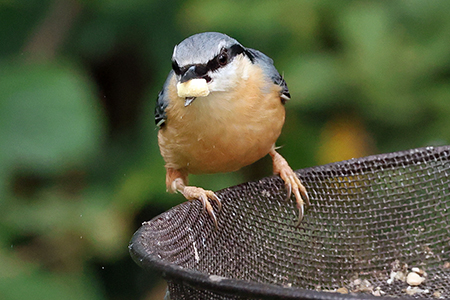
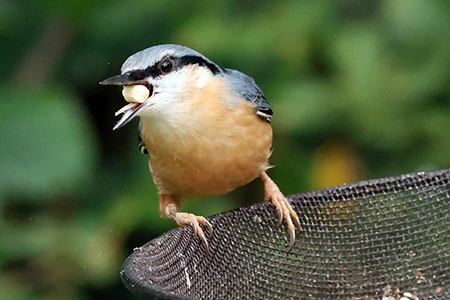 |
|||||||||||||||||||||||||||||
|
8th: Dogs and foxes Cheeky pups - this was meant to be Jack's new beanbag chair  And here are our two foxes that we catch on the cams most nights now - they have very different tails |
|||||||||||||||||||||||||||||
9th: The beauty of webs |
|||||||||||||||||||||||||||||
|
10th: New and Returning A new hoverfly spotted today, the Snout Hoverfly (and that is one seriously long snout), and the starlings are back - it really must be mid-autumn now  
|
|||||||||||||||||||||||||||||
|
11th: New species We cleared the small rocks today inside one of the chiminera trailcams (in order to move it) and found two new species. The Red Legged Shieldbug was sadly dead (they overwinter as nymphs), the spider was very much not. It is from the Clubiona family, maybe a Clubiona terrestrus but in order to confirm this, genitalia would need to be examined!!   |
|||||||||||||||||||||||||||||
|
12th: Tis most definitely fungi season. First up: a beautiful Parasol, Macrolepiota procera. They really are a wonder to behold, edible and so easy to spot from a distance. We get them in singles here but up on our local moor, there are in wonderfully huge half-circle fairy rings!! The gills are perfect!! And a new one for us: Orange Peel Fungus (we think) Aleuria aurantia, also edible. There are literally hundreds growing on one of the clay banks in Swallow field. It is apparently, frequently found on disturbed soil, which is exactly what are banks are. 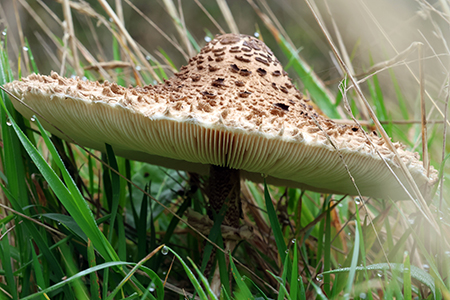  |
|||||||||||||||||||||||||||||
|
13th: Happy Wood Pigeon enjoying the greenery |
|||||||||||||||||||||||||||||
|
14th: More fungi Finding fungi is the east bit, identifying it is a lot harder. We ;think; this might be a honey fungus of some sort, and we have found it growing outside the field shelter in Swallow field as well as round the bay tree stump and nearby grass.    |
|||||||||||||||||||||||||||||
|
15th: Hedgehogs with the Chulmleigh Guides A fabulous evening with Chulmleigh Guides yesterday (led by Mandy and Lesley) showing our Hedgehog video made entirely from trail cam footage taken here at The Relaxed Sanctuary. We then went onto make seriously cute clay and pine cone hedgehogs families. Bet you smile when you look at those. There were some fabulous questions and information sharing and we left with a real sense of optimism that these young people really are trying to do the right thing for nature and our planet!! Thanks to Amy Roberts for the invite. 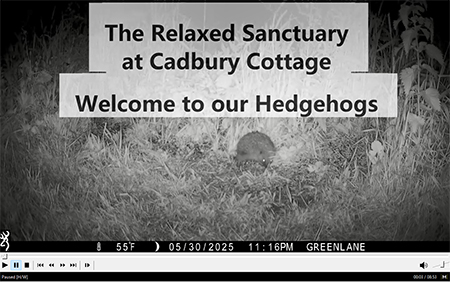   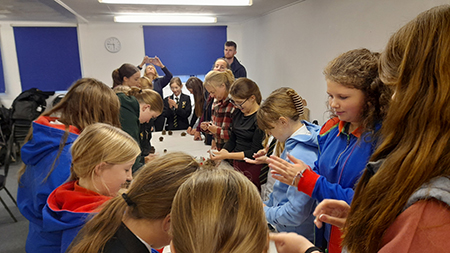  |
|||||||||||||||||||||||||||||
|
16th: GS Woodpecker We are delighted to see the GS woodpeckers back at our bird feeding station after a break of a few weeks. Isn't this handsome male just stunning? Old feathers molted, new ones look great - all ready for the winter now!  |
|||||||||||||||||||||||||||||
|
17th: Mothing Possibly our final mothing of the year saw 43 moths of 9 species, with 5 of them being new!! It pays to keep setting the trap into autumn to catch the late flyers and the migrants. (If we get a dry/ warmish night any time soon, I may set them again!!) In these pictures we have Black Rustic, Green brindled crescent (green and brown), Green red carpet (darker green), November moth (rather plain) and the final three: a Beaded Chestnut (top), a Red-line Quaker (bottom left) and a Lunar Underwing (bottom right) Thanks to Jo Everitt for identifying these ones for me. The Lunars all have at least two 'marks' either side of each wing and are hugely varied in colour, I haven't actually seen the dark, crescent-moon shape on the lighter hindwings - the feature that gives the moth its name!! My task now is to get all this year's moths in a neat spreadsheet to send to Devon Moths for their records! 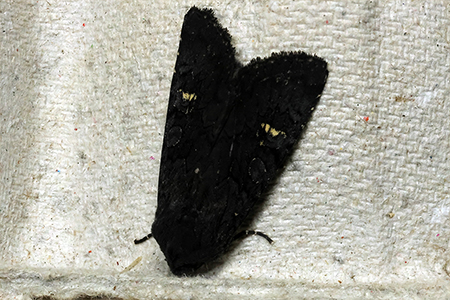 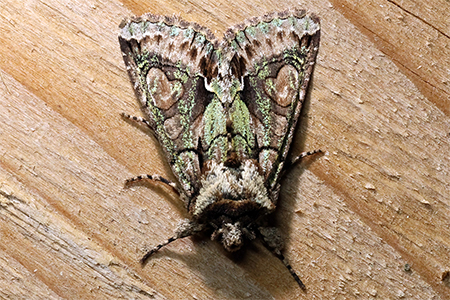 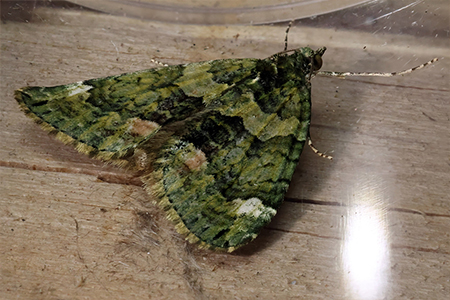   |
|||||||||||||||||||||||||||||
|
18th: Starlings on Chaser Pond - so glad to have them back (Sound On a must) |
|||||||||||||||||||||||||||||
|
19th: More fungi Common Jellyspot - Dacrymyces stillatus, an unknown (for the moment) Brittlestem, Yellow Brain - Tremella mesenterica and King Alfred's Cakes - Daldinia concentrica. They all couldn't be so different.    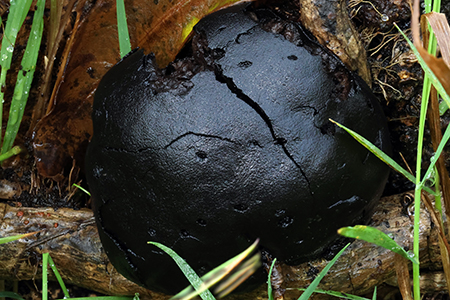 |
|||||||||||||||||||||||||||||
|
20th: More fungi Our fungi finds just keep getting better and better. Common-Bonnet - Mycena galericulata and Blushing Bracket - Daedaleopsis-confragosa.  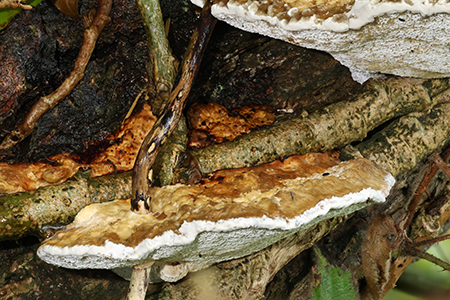 Variable Oysterling - Crepidotus-variabilis and unknown 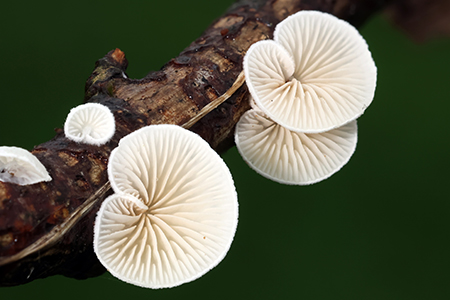  Crystal Brain Fungus - Exidia nucleata and Petticoat Mottlegil - Panaeolus-papilionaceus 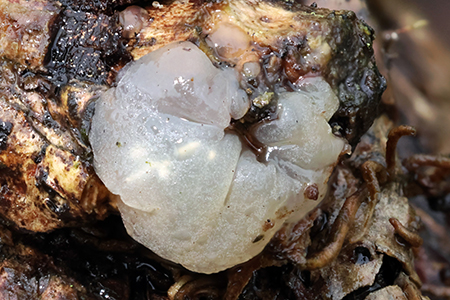  |
|||||||||||||||||||||||||||||
22nd: Stunning views round the land this morning
 
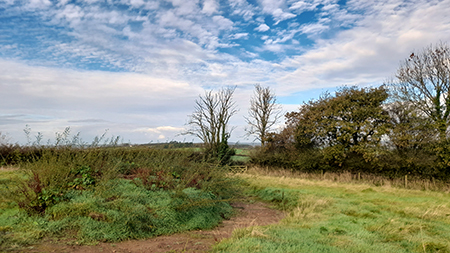 
 
 |
|||||||||||||||||||||||||||||
|
24th: A treat of a visitor Our kingfisher is taking a break but... We have another visitor to its perch - a wee bit bigger, not 'quite' so colourful but just as exciting. A female sparrowhawk!! Love the eerie... almost dawn light here too. |
|||||||||||||||||||||||||||||
|
25th: A major catch Keep your eye on the hedgehog at the bottom left - s/he is about to bag a big prize!!! We are so lucky having such a healthy population living here - we have seen up to four at once under our bird feeding station of an evening. Currently we have three youngsters feeding there most nights - all looking in great condition. Hedgehogs don't necessarily hibernate all winter and it is often advised to feed all year round - wet dog and cat food is ideal or specialist hedgehog food. And I am sure you all will, but do please advise anyone involved in hosting bonfire nights to check for hedgehogs before they light their woodpiles, or better still, don't build the final pile until the day they are going to light it. Happy hedgehog watching!! |
|||||||||||||||||||||||||||||
|
26th: Wildlife coasters What a stunning afternoon we had here at Cadbury Cottage today - ten amazing ladies all needle felting for a good three hours and making these most beautiful wildlife coasters, with some going away with their own kits to carry on at home. We kept warm with cake and tea, and a sneaky under-the-table heater. Conversation flowed, new friends were made and the next two workshops/ gatherings discussed and planned!! Thank you to everyone who came - we absolutely loved it!! To find out more about our wildlife and nature community events, (free or with a small cost just to cover materials), do keep an eye on our community page. We have more eco-crafts planned this winter and then in the spring will resume our nature led-activities: mothing, pond dipping, plant hunts, bat watching and more. 

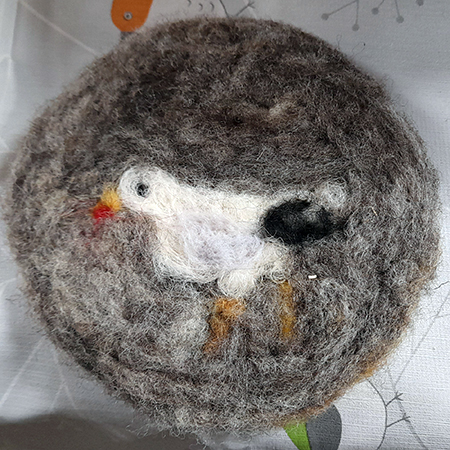

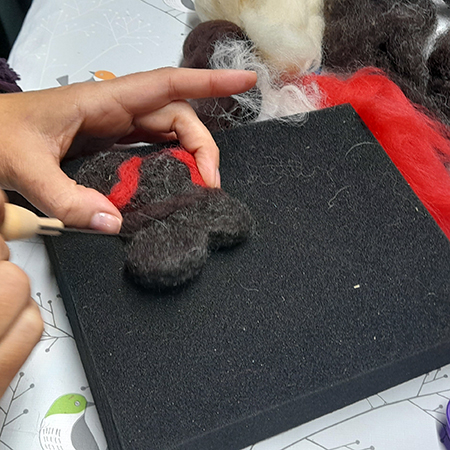
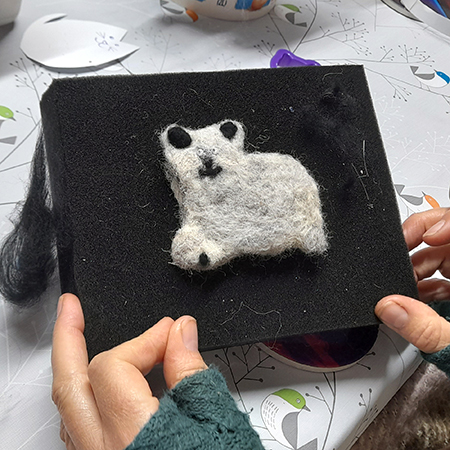


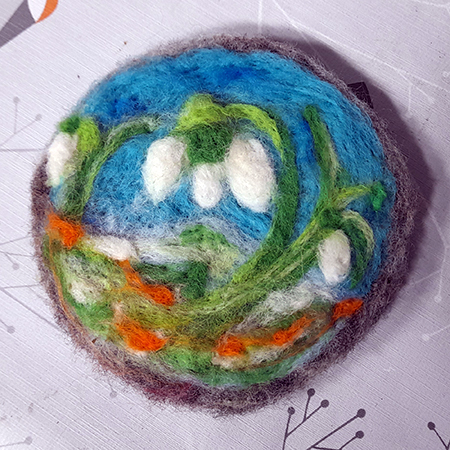

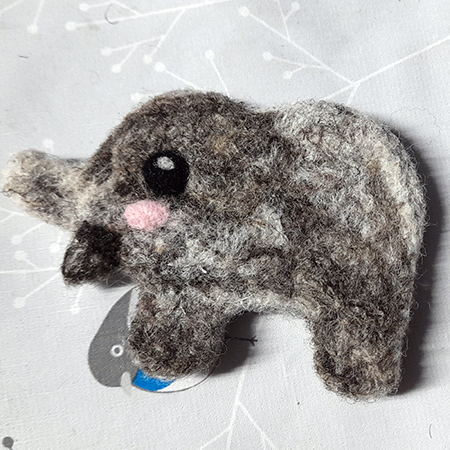

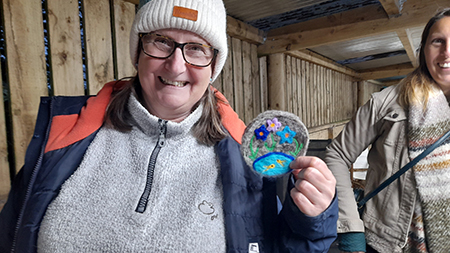
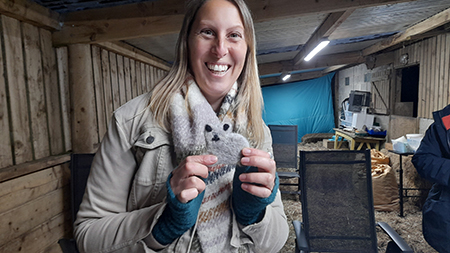
 |
|||||||||||||||||||||||||||||
|
27th: Pigeon It's a delight to get to know individual animals on our land -this Wood Pigeon with its distinctive neck markings, is a regular visitor to Fruit Pond. |
|||||||||||||||||||||||||||||
|
28th: In flower These are all flowers from the banks in Fruit and Swallow fields, grown from seed we scattered - and all are still delightfully in flower. Purple Viper's Bugloss, Cornflower, Musk Mallow, Cornflower, Yarrow and Knapweed. 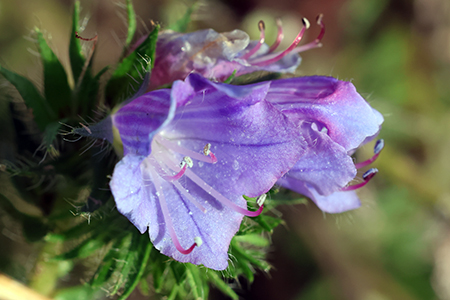
   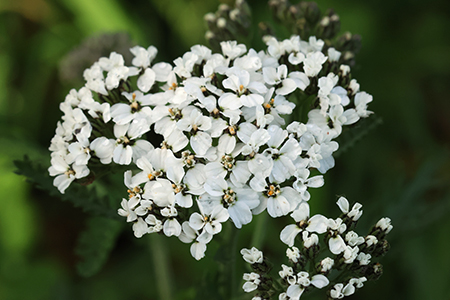
 |
|||||||||||||||||||||||||||||
29th: Wet and muddy - but happy and loved! |
|||||||||||||||||||||||||||||
|
30th: Moths and Fungi More amazing fungi - identification remains problematic and these are currently our best guesses! We will come back and amend when we are more (or less) certain. In order from the top: Funeral bell Mushroom (Galerina Marginata), Conical Brittlestem (Parasola conopilea) and the lovely grey Steely Bonnet (Mycena pseudocorticola) And what really is our last Mothing of the year (probably):: Yellow line quakers x5 (the photo with the reflection is one), a Green brindled crescent x1 and a Winter moth x1. 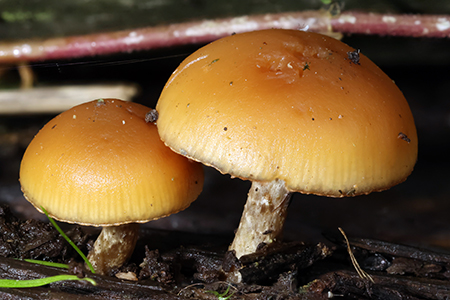  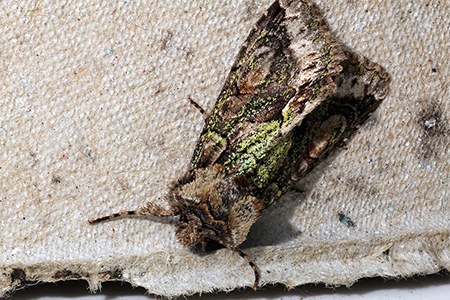  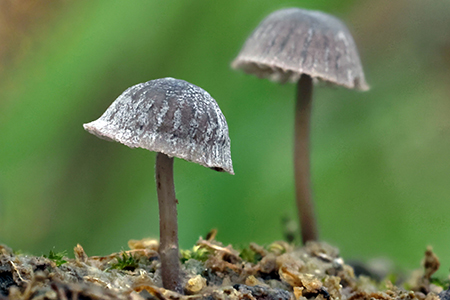 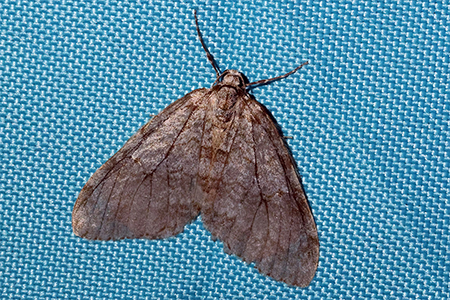  |
|||||||||||||||||||||||||||||
|
31st: Shaggy Ink Cap We have been seriously getting into fungi this autumn as this month's entries have hopefully shown. We have found a good 20-ish species in the last three weeks or so. Below is a Shaggy Ink Cap - you can totally see why it has the name it does. These photos are four days apart! This mushroom is also called the Lawyer's Wig and before it starts to produce the black ink, is edible. And the ink itself is, apparently, entirely usable. This single specimen was found growing in a corner of the field shelters in Swallow field, in the old straw! I wonder whether more will appear next year.   |
